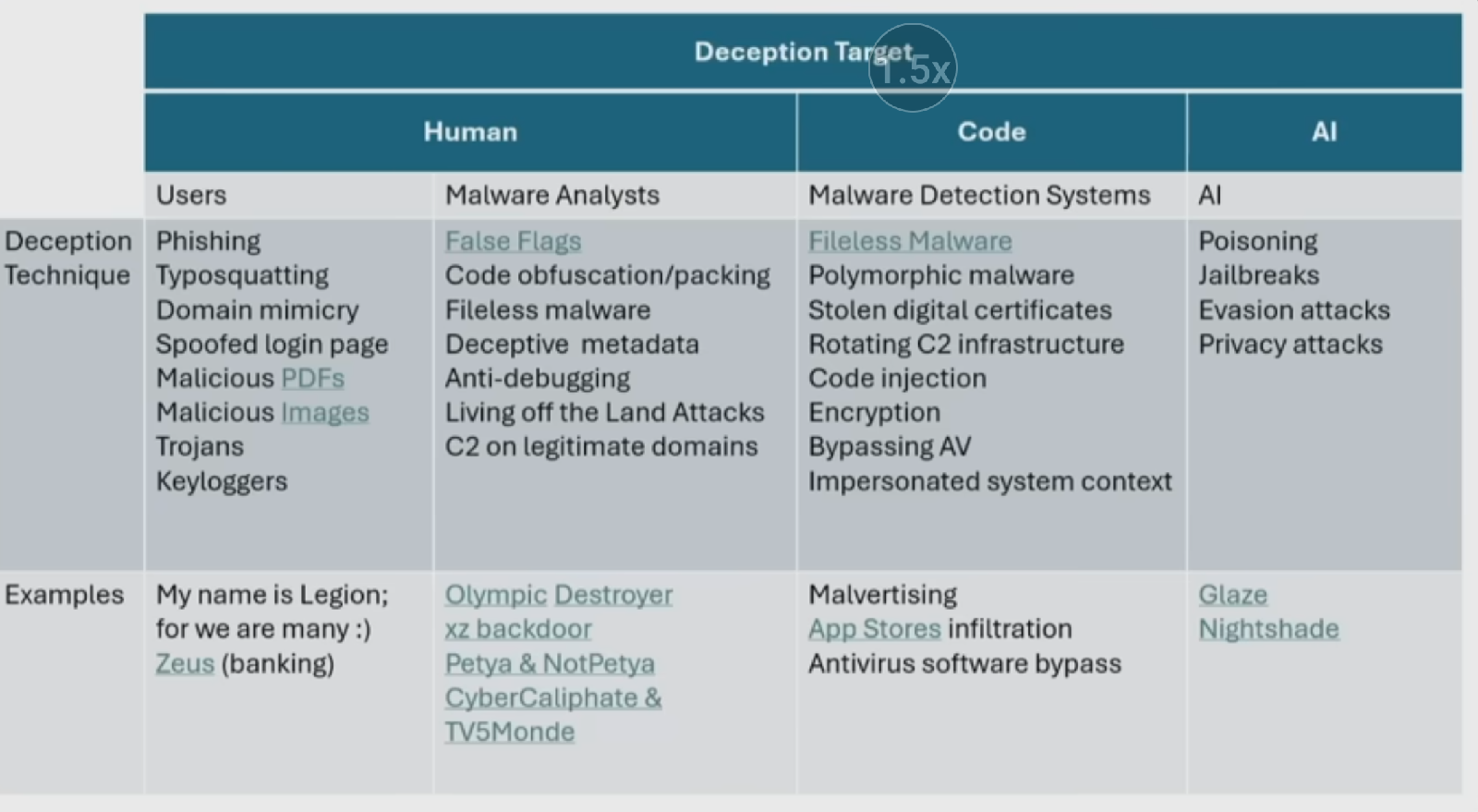Quick and Dirty -- Preferably Dirty
Key Terms
- CIA - Confidentiality Integrity Availability
- Risk = TVA - Threat Vulnerability Asset
- Bots & Zombies - Hijacked computers called bots or zombies running botnets
- APTs - Advanced Persistent Threats
- MD5 and SHA are - Hases used to store secret info
- RMF - Risk Management Framework
- TCP/IP - Internet Comm Protocol -- Transmission Control Protocol
- Segmentation - Breaking a network in segments for performance and security
- VPN - Virtual Privae Network
- On-Path Attack - MITM Man in the Middle Attacks
- DDoS - Distributed Denial of Service
- Open Source - Source code available to anyone, free software liscence
- GNU Coreutils - GNU is Not Unix, Standard utilities in Unix & Linux
- AD - Microsoft Active Directory
- Defender - Microsoft endpoint security aka Microsoft Defender AntiVirus
- LM Cyber Kill Chain - Lockheed Martin Attack Framework
- ATT&CK - Mitre's Adversarial Tactics, Technicques & Common Knowledge
- Kali - Linux distro with over 600 tools
- GUI - Graphical User Interaface
- CLI - Command Line Interface
- Linux - OS Kernel created by Linus Torvalds using the
- GNU/GPL - General Public Liscence
- CIS - Center for Internet Secrity & Benchamarks
- An OS - infrastructure software between apps and hardware
- Wintel - hardware specs built around the x86 intel cpus owned by microsoft based on the original IBM PC from 1981
- DLP - Data Loss Prevention
Patches -- security patches are software and operating system updates that aim to fix security vulnerabilities in a program or product. These updates literally “patch” a hole in your defense, preventing a hacker or piece of malware from exploiting a way into your network.
Windows Vs Linux : WINDOWS
- Directory/Folder Based File System
- 75% of the worlds computers
- Proprietary : users DO NOT have kernel access
- Limited customizability
- Security relies on user updates or acceptance of limitations
- Collects and Shares much of user behavior
Windws vs Linux : LINUX
- Hierarchical Tree file system
- Server adoption rates continue to outpace other OS's
- OPEN SOURCE
- Very Customizable
- Open-source, community supported security
- more privacy focused by design
Windows Enterprise :
- Windows Server
- Web Server/IIS
- File/Print/DB Servers
- Cloud
- WiFi
- Mobile Device Management
Windows Active Directory:
- Oversees all users, groups, and devices in a windows environment
- Enables system admins to control permissions and access
- Runs on Windows Servers
- Objects : single users, applictions, devices
Todays most popular OSs
- Linux - Primarilty for SERVERS
- Windows - Desktops Laptops and Servers
- MacOS - Apple Desktop and Laptops
- iOS & Android - Apple and Open-Source OSs for mobile phones
- Linux IS Open Source and follows the GNU General Public Liscence
SSDLC -- Secure Software Development Lifecycle
Secure coding practices and vulns
- 1. Requirement Analysis
- 2. Design
- 3. Development
- 4. Testing
- 5. Release
- 6. Maint.
Three States of Data :
- Data in Use -- Data that is being processed actively
- Data in Transit -- Data moving from one locaiton to another
- Data at Rest -- Data that is being stored or archived
Overview of tools and controls
- Segmentation -- Dividing networks into multiple segments or zones
- Segregation -- Implementing rules to control comm. betweeen hosts services or subnets
- Firewalls -- BiDirectional implementation of above two controls.
Network Segregation
- DMZ -- demilitarized zone can create isolation and the importance of isolation to the security of a network.
- Adheres to a ZERO-TRUST model
- Organizations place public facing services within a DMZ
Server Hardening:
- User Configuration
- Network Configuration
- Roles and Features (Specific to windows server)
- Update Management
- Network Time Protocol -- NTP
- Firewall Configuration
- Event Logging
Zero Trust Framework
Zero Trust is a proactive, interated approach to security accross all layers. Demands the following :
- 1. Continuously verifies every transaction
- 2. Asserts least priviledge
- 3. Relies on intelligence, advanced detection, and real time response to threats.
Whats the difference between windows and linux?
Windows is a hierarchical folder-based file system, Linux is a tree file system. Windows is proprietary with a closed kerenel where linux is open source.
How would you differentiate Windows Enterprise from a home computer?
the use of centralized auth thru active directory is the key diff
What does the term "object" refer to in AD
a single entity such as a user or device
Shift-Left Testing -- Stage-based testing of code and functionality for constant improvement
Application -- program designed to perform a function or funcitons on a computer
Misinformed Users is NOT a regular vuln on the OWASP top 10 list.
Fuzzing is NOT a step in SSDLC
Shift-Left testing refers to Incorporating security controls and considerations at each phase of the SSDLC
What is DevOps? A set of practices designed to avoid delays and bugs by incorporating IT and Dev teams during SSDLC
Yes there is typo's.....see title







Comments
Post a Comment